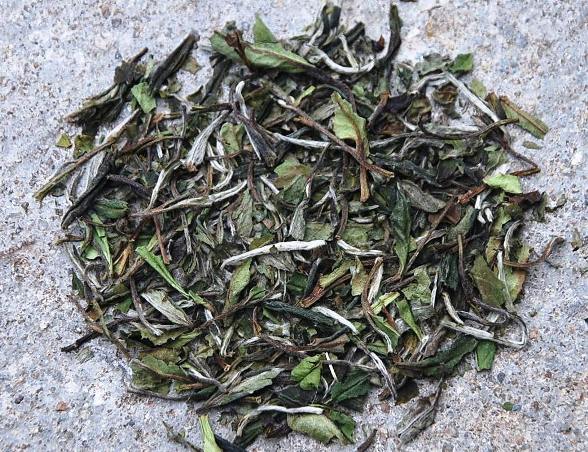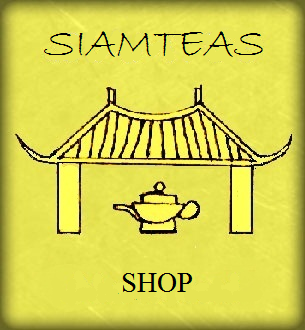
After looking at the processing of green tea, black tea, and oolong tea in the previous lessons, we turn to white tea processing now.
Despite its comparatively small share of the western tea market, white tea has a long history of use as a medicinal herb, imperial tribute tea and a status symbol within the wealthy upper class in China. There, the white tea processing method has its origin in the Fuding region of Fujian province. However, today other tea growing regions of the world also produce their versions of white tea.
White Tea Processing – Origin and History
Due to a lack of historical documentation, the early history of white tea processing largely fades in the fog of time. However, a number of literary references suggests that this tea category looks back on a very long history. For example, the Chinese “tea sage” Lu Yu mentions white tea as early as AD 760 in his work “Cha Ching – The Classic of Tea”. Even older evidence shows that white tea was used as a medicinal plant as early as the last two millennia B. C.
Originally, white tea is not just a processing category, but also tied to the Fuding-native “Da Bai” tea plant variety and its regional subspecies. Accordingly, the region is the scene of the entire early history of the use of white tea for medicinal and enjoyment purposes.
In contrast to the early history, the development of the commercial cultivation of white tea in the Fuding region is documented in detail. From there, the use of relevant cultivars and pertaining processing method spread in circles. As a result, we now find white tea not only in Fuding, but throughout Fujian and neighboring provinces, including Zhejiang and Anhui.
White Tea Processing

Essentially, the processing of white tea consists of an extended withering phase, followed by final drying only. Because of the low oxidation level and omitted heat fixation, white tea is the most natural of all tea types. This means, the active substances in the processed tea leaf quite resemble those in the fresh tea leave. For the same reason, the category is often perceived as the “easiest” of the 6 Chinese Tea Processing Categories. In practice, however, it’s rather not easy at all…
In the following, I describe the basic steps of white tea processing. However, deviations and individual differences may appear depending on region, producer and cultivar. For example, higher levels of oxidation and/or roasting at higher temperatures are possible processing variations for white tea .
1. Withering
By default, the tea leaves are first spread out in the sun on large bamboo mats for several hours after picking. In contrast to the processing of oolong tea, there is no swirling of the tea leaves and no breaking-up of the leaf surfaces. Much rather, in order to counteract accelerated oxidation, it is important to ensure that the tea leaves remain undamaged. Comparably high temperatures and relatively low humidity are another crucial factor. The processing of white tea is therefore extremely weather-sensitive and requires good timing .
The outdoor withering phase is often followed by an extended indoor withering phase. During this, the tea leaves continue to oxidize until reaching the desired degree of oxidation. When it rains, the entire withering process must take place indoors. This can have negative effects on the taste of the tea or even spoil it completely.
During withering, the tea leaves undergo a natural oxidation process up to a comparably low degree of 2-3%. Depending on temperature and climate, the total process can take between 20 and 60 hours.
In addition to the two main steps in the processing of white tea, there are secondary processing steps that are also common for other types of tea. In particular, these include the pre- and post-sorting of the tea leaves, in order to increase the quality.
2. Drying
After reaching the desired degree of oxidation, the tea leaves go straight to final drying. For this purpose, they can be briefly heated to over 100 ° C. However, a main characteristic is the use of rather low drying temperatures in a gentle drying process. At this, the prevailing method is roasting, traditionally over charcoal fire, today often in convection ovens with an easily adjustable drying temperature. During processing, the exposure to light, air and warm temperatures results in a characteristic pastel coloration of the tea leaves. The unopened buds, on the other hand, glow in the white of their thick hair coating.
White tea comes with extraordinarily good storability features that benefits traders and end consumers alike. In fact, at dry and not too hot storage conditions white tea won’t lose much of its taste and aroma even in years.
Types of White Tea
White teas according to picking standard
The main distincitive feature of white teas is their picking standard. Accordingly, the most famous types are White Silver Needle and White Peony. For the silver needle tea, only the unopened young buds qualifiy for picking. White Peony (also: „Pai Mu Tan oder „Bai Mu Dan“), on the other hand, represents the classic 1+1 and 1+2 picking standards. Where the buds-to-leaves ratio exceeds 2:1, it goes as “gong mei” tea. And where a white tea mainly consists of older and larger leaves, it is called “shou mei”.

Because of a higher share of aroma substances, especially theaflavines and thearubigenes, White Peony tastes more intense and full-bodied. In contrast, due to its limited availability, resulting high prices and often perceived as “precious” subtle character, the silver needle is particularly popular among the wealhier Chinese.

White teas according to origin, cultivar, processing
Beyond the picking standard, there are several more factors that can define a type of white tea. One such factor, for example, can be a specific place of origin within Fujian, such as Fuding, Zenghe, Songxi, and Jiangyang. Moreover, such specific place of origin can also point to specific sub-cultivars of the “Da Bai” variety. And finally, there are variations to individual processing steps that also establish a white tea of its own. For example, this can be outdoor versus indoor withering or specific combinations of both, or the drying temperature and/or method.
White Moonlight Tea
More recent than the history of of white tea processing in Fujian is the application of the same method to large-leaved tea tree varieties in Yunnan. Despite of differences in taste and visual appearance, the resulting White Moonlight Tea shows clear parallels to the white tea from Fujian. At this, a particularity of White Moonlight Tea the white/black color contrast between the two sides of a leaf. This is also where the tea got its name from.
Meanwhile, White Moonlight Teas do not only from Yunnan anymore, but also from neighbouring regions with native large-leaf tea tree varieties. Examples for this are a White Moonlight Tea from Laos or from “Tuyet Shan” tea trees in northern Vietnam.
One more thing, on my own account…
Do you like this article? Support the maintenance and further development of “My Little Tea School – The ABC of TEA” through your shopping at



